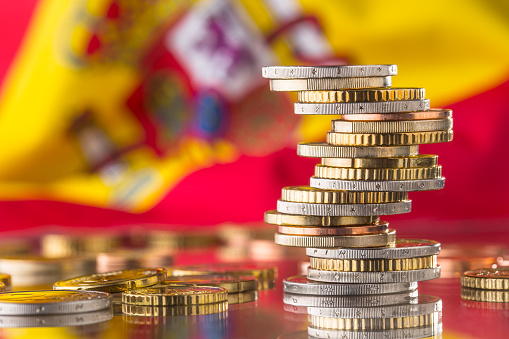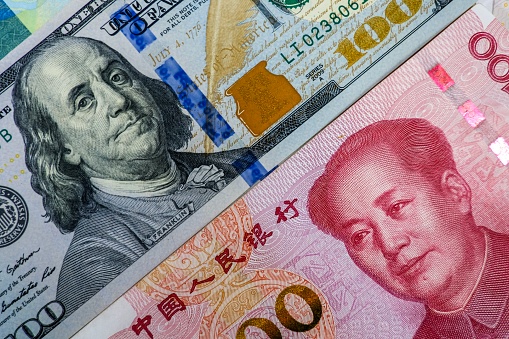The Economy of Spain
Located in Europe, Spain is a country that has 17 autonomous regions. Its capital city is Madrid, and Barcelona is a city that is defined by Antoni Gaud’s modernist landmarks. The country is home to the Prado museum, which houses works by European masters.
Small and medium-sized enterprises
SMEs are a vital part of the Spanish economy. They play a central role in job creation and economic growth. They are the drivers of wealth in the Spanish economy.
In the last few years, Spain has seen a spike in unemployment. The economy has suffered from the COVID-19 crisis, a recession that hit SMEs hardest. The Spanish Government has taken steps to improve the entrepreneurial environment.
The SME Initiative is a management instrument designed to boost investment projects and stimulate activity. It has helped more than 35 000 Spanish SMEs get access to loans and other finance. This initiative has also had a substantial multiplier effect on the economy.
The SME Initiative has provided access to more than 3.2 billion EUR of financing to small and medium sized businesses. The average loan size for Spanish SMEs is EUR 76 thousand.
The SME Initiative is the flagship EU policy initiative. It is spearheaded by the EIB Group and is implemented by financial intermediaries selected through public competitive tendering. It has the potential to mobilise EUR 5.5 billion worth of credit.
There are nine financial institutions participating in the Smart and Sustainable Growth Programme, including Bankia, Banco de Santander, and Bankinter. Other entities participating include Grupo Caja Rural and Liberbank. These entities have been chosen to highlight the SME Initiative.
The Small Business Act for Europe is a set of policy measures designed to promote entrepreneurship, responsive administration, and internationalization. It is organised around 10 principles. Each EU Member State has appointed a high-ranking government official as national SME envoy.
The Small Business Act for Europe is a good example of the government’s commitment to small and medium sized enterprises. Despite the challenges faced by the industry, SMEs are still a vital part of the Spanish economy. They are the drivers of wealth and job creation. However, they still have a lot of work to do to be recognized and to grow. In order to do that, economic leaders need to prioritize the growth of SMEs.
The SME Initiative has been a major success in Spain, where it has generated 3.2 billion euros in financing for SMEs. By taking advantage of this new initiative, Spanish businesses will be able to compete more effectively and create more jobs.
Industrial and agricultural activity
During the mid-20th century, Spain was a predominantly exporter of agricultural goods. Industrial production concentrated on the northern coast and in Catalonia and Basque Country. The tertiary sector remained dominated by chemical and metallurgy production.
In the 1980s, the character of Spanish agriculture changed. The agricultural sector experienced a gradual intensification due to increased use of external inputs. The loss of rural manpower was an important factor that affected the composition of the agricultural sector. In turn, the economy suffered a large outmigration from rural areas.
Agricultural output declined from 23 percent of GDP in 1960 to five percent in 1986. This decline in output was accompanied by a decrease in the share of GDP per agricultural worker. This was reflected in an output per agricultural worker that was below the European Community average in 1985.
Spanish agriculture is dominated by small-scale farms, which make up 5.2 percent of the country’s total farmland. Most farms have less than five hectares of land. Large farms make up only 1.1 percent of the total.
The agricultural sector contributes around 3.1% of the GDP of Spain. Agricultural exports represent almost 20% of the country’s total exports. It is a highly regarded industry worldwide. It employs around 450,000 people.
The main crops are olives, wheat, and sugar beet. In 1983, citrus fruits represented 12 percent of the country’s total agricultural production. In the Canary Islands, a significant export surplus of tomatoes was recorded. The Canary Islands also produced a variety of vegetables for local consumption.
Agricultural production was highly efficient in the Rio Ebro Valley, but inefficient in the central regions. Most agricultural land was highly arid due to lack of rainfall and harsh, rocky soil. The interior of Spain is dominated by semi-arid plateaus and mountains.
The agricultural sector contributed EUR 184.2 billion to EU GDP in 2021. The agricultural sector employs 4% of the total workforce. It is estimated that the sector’s contribution to GDP will grow by 5.7% in 2021. This increase is largely due to tourism activities. In addition, the sector’s contribution to GDP is set to return to pre-pandemic levels by 2023.
Exports and imports
Among the largest imports and exports of Spain are oil, petroleum products, and automobiles. According to the CIA, in 2009, the country’s trade deficit was $77.5. However, the export base was growing, at a rate of 7%.
The number of regular exporters has increased by 60% in the last ten years. The World Bank reports that Spain will have a trade surplus of nearly a percentage point of its GDP in 2021.
The top imports include petroleum, crude oil, and fuel. Another important commodity is iron. The country has a large automotive industry.
The export base in Spain grew by a modest 7% in the last year, reaching a new all-time high of 59,000 regular exporters. Spain is ready to take advantage of the international recovery.
According to the Ministry of Economy and Competitiveness, the top 10 exports of Spain accounted for 53.8% of the total value of global shipments. In fact, the top 10 most expensive goods exported by Spain in the last year were automobiles, pharmaceuticals, medicaments, and delivery trucks.
The export of goods and services has increased from 27% of GDP in 2007 to between 33% and 35% in 2012. The most important import and export partners of Spain are EU countries.
The export of goods and services in Spain is a strategic and important part of the country’s economy. Spain’s trade balance was positive in 2021, which is an improvement over the negative trade balance in the previous year. However, Spain’s trade deficit is still structurally negative.
The top 10 export products in Spain include automobiles, medicaments, and refined petroleum. The fastest-growing export category is mineral fuels, including oil.
The most important trade partners of Spain are Italy, France, and Germany. In the first ten months of 2021, Spain’s exports grew by 21.1%, while imports grew by 22.1%.
The top 10 export products in Spain are automobiles, pharmaceuticals, medicaments, refined petroleum, and delivery trucks. The top 10 imports include petroleum, crude oil, and vehicle parts. The best-selling product in Spain is a SEAT car, which has been a local brand for years.
COVID-19
During the past six years, Spain enjoyed reasonable economic expansion. However, a combination of macroeconomic factors led Spain to enter a pandemic in early 2019. COVID-19 has affected every aspect of society, from workers to consumers. This has triggered a multipronged effort to reimagine the economy and adapt to a new normal.
While Spain’s public finances were already in pressure before the COVID-19 crisis, severe deterioration is expected in the future. Currently, public sector debt to GDP exceeds the European average by almost 20 percentage points.
The Spanish government ended the year with a public deficit of 2.8 percent. This is expected to worsen due to the projected downturn. The fiscal response to COVID-19 in 2020 will include a recapitalisation fund for large companies.
The composition of the Spanish economy will be one of the key factors gauging its recovery. The tourism sector is heavily dependent on international tourists, who account for 55 percent of total revenue. However, the tourism services export sector has also been hit.
As a result, tourism activity in Spain has dropped 75% from April 2020 to March 2021. Residential housing, one of the most energy-inefficient sectors in Europe, is also a huge source of emissions. Public investment in climate-compatible residential housing could help to strengthen Spain’s long-term economic potential.
One of the most important measures to ensure sector competitiveness is to boost productivity. Spain has a high proportion of small and medium-sized firms with limited financial resources. This means that smaller companies are especially vulnerable to the weakened economy.
The public sector could also help facilitate access to liquidity and incentivize demand in sectors that are struggling. In addition, the public sector can support the reinvention of companies.
The next few years will be a crucial time to address the vulnerabilities of the Spanish corporate sector. In order to help the country’s economy recover, the public and private sectors must work in unison. The most important measures at this stage are to continue providing liquidity support and flexible fiscal support, and to focus on productivity growth.
The European Central Bank’s SAFE survey reveals that the share of vulnerable SMEs in the Spanish economy has increased by 27 percentage points to 27 percent. Without policy measures, this figure could rise to 37 percent.



